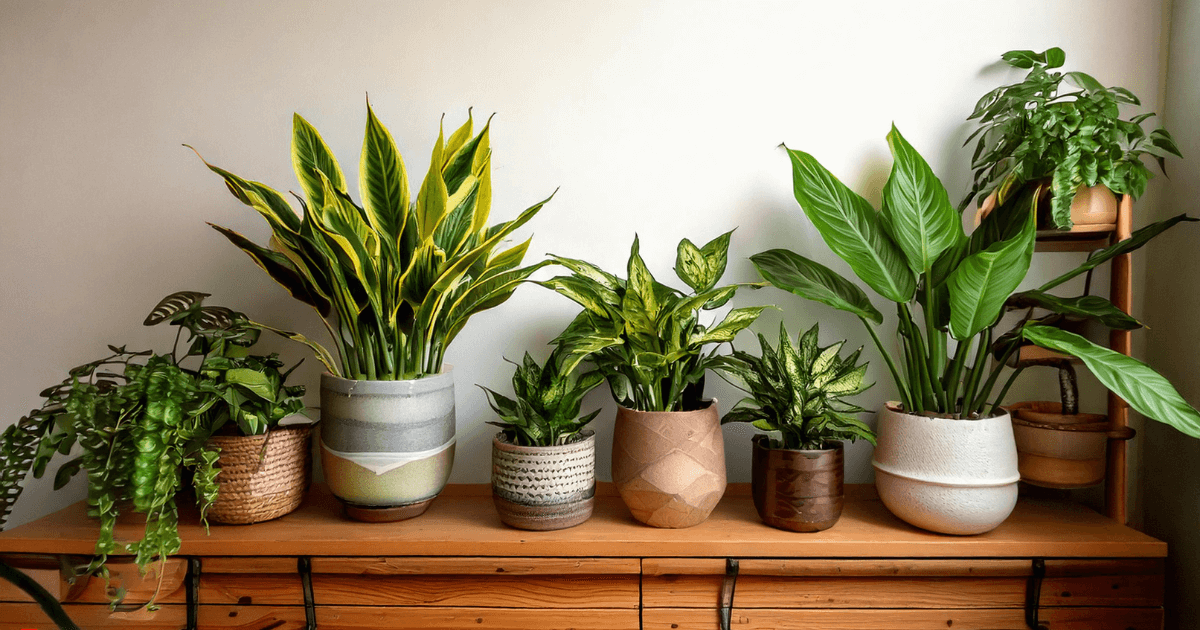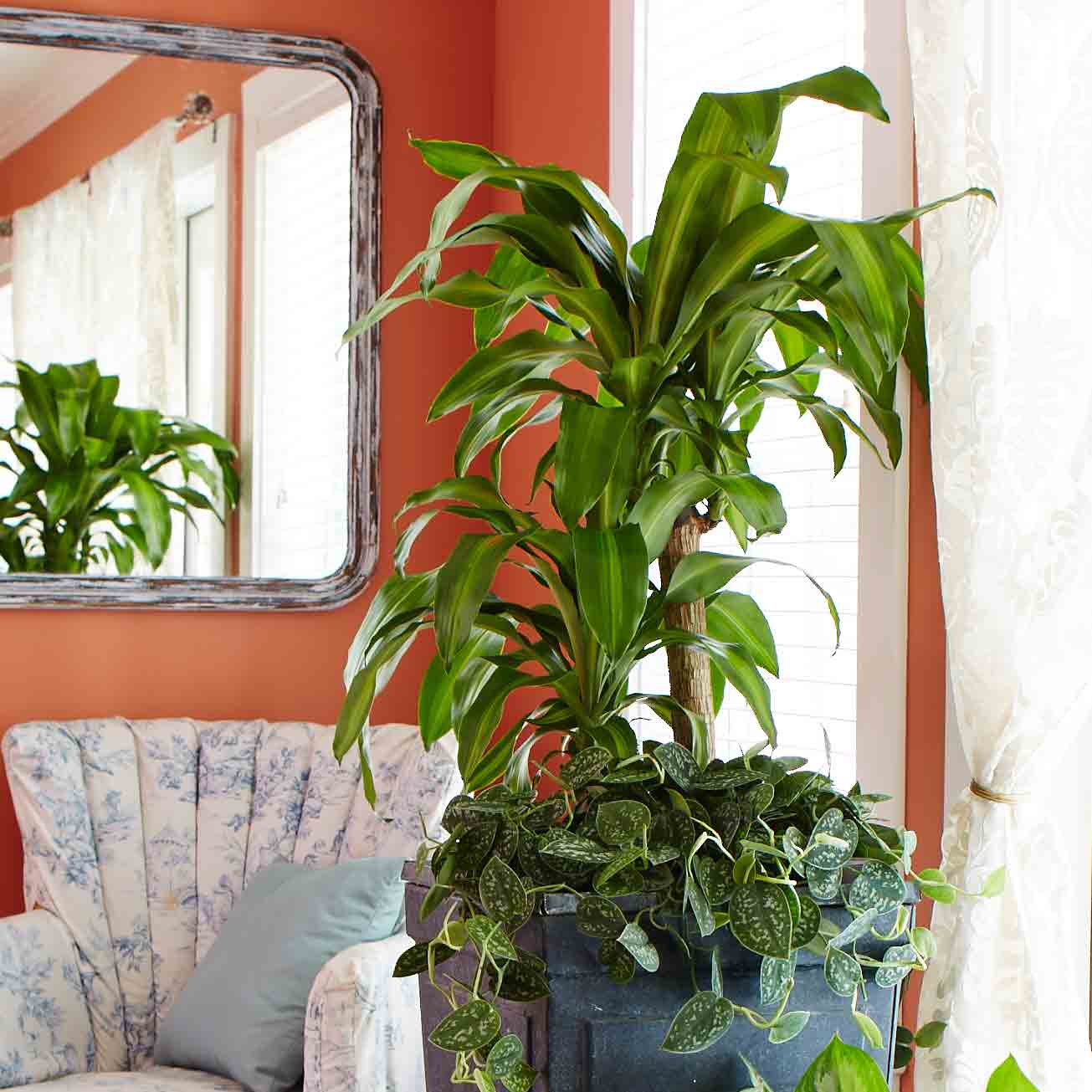Uncover the Secrets of Low-Light Indoor Plants and Just How They Improve Your Atmosphere
Low-light interior plants have actually gathered enhancing interest for their one-of-a-kind capacity to boost both visual charm and environmental high quality within offices and homes. These durable varieties, consisting of the Serpent Plant and Peace Lily, not only thrive in challenging lighting conditions but likewise play a pivotal duty in air filtration and psychological wellness. Understanding the particular benefits and treatment needs of these plants can significantly influence your living area. As we check out the ins and outs of their benefits, you may discover insights that could change your environments in unexpected ways.
Advantages of Low-Light Indoor Plants
Although lots of people presume that indoor plants call for abundant sunlight to flourish, low-light interior plants provide a wide range of advantages that make them suitable for different environments. One of the key advantages is their adaptability; they can thrive in rooms with restricted all-natural light, such as workplaces, basements, or areas with small home windows. This function enables people to enhance their surroundings with plant, adding to enhanced visual appeals without the demand for comprehensive lights adjustments.
Furthermore, low-light interior plants can significantly enhance indoor air top quality by filtering unsafe toxins and releasing oxygen, making living rooms healthier. Research has shown that certain varieties can take in pollutants, therefore advertising a cleaner atmosphere. Furthermore, they can improve psychological well-being by minimizing stress and anxiety and increasing productivity. The existence of plants has actually been connected to better feelings of peace and focus.
Furthermore, low-light plants frequently require much less upkeep than their sun-loving equivalents, making them excellent for active people or those new to gardening. Their resilience allows them to grow with marginal intervention, hence providing a satisfying experience for plant lovers and novices alike. In summary, low-light interior plants offer both practical and visual objectives, making them useful additions to any type of room.
Top Low-Light Plant Varieties
Low-light interior plants can be found in a variety of species, each offering unique features and advantages suited for dark atmospheres. Among one of the most prominent varieties is the Serpent Plant (Sansevieria), understood for its air-purifying abilities and building fallen leaves. This durable plant flourishes on neglect and can endure a wide array of light conditions.
An additional superb choice is the ZZ Plant (Zamioculcas zamiifolia), which includes glossy, dark green fallen leaves and is very drought-tolerant. Its versatility makes it a favorite for workplaces and homes with limited sunshine.
The Pothos (Epipremnum aureum) is likewise a top challenger, with its trailing creeping plants and heart-shaped leaves - Best low-light indoor plants. This functional plant can be educated to climb up or cascade, including aesthetic rate of interest to any type of area

Treatment Tips for Low-Light Plants
Caring for low-light interior plants requires a nuanced understanding of their certain requirements to guarantee optimum growth and vitality. Initially, it is important to pick the right potting mix, as a well-draining dirt is essential to avoid root rot. A blend designed for houseplants, typically including peat moss and perlite, functions well for a lot of low-light selections.
Watering is one more crucial element of treatment. Low-light plants usually require much less constant watering compared to their sun-loving equivalents.
Fertilizing needs to be approached with care. During the expanding period, a diluted liquid plant food can be applied monthly, however in cold weather, numerous low-light plants get in inactivity and call for little to no fertilization.
Finally, it is necessary to regularly clean the leaves to remove dirt, permitting for far better light absorption. By adhering to these treatment tips, you can cultivate a successful setting for your low-light interior plants, improving both their appearance and long life.
Enhancing Air Top Quality With Plants
Indoor plants play a substantial role in enhancing air quality within homes and office areas. With the process of photosynthesis, these plants take in carbon dioxide and release oxygen, adding to a healthier environment. Furthermore, certain low-light indoor plants possess the capability to filter dangerous toxins, such as trichloroethylene, formaldehyde, and benzene, which are commonly found in interior settings.

Furthermore, the existence of indoor plants can enhance humidity levels, which aids alleviate completely dry skin and respiratory system concerns, better improving general health. This ability to boost air quality not just advertises physical health and wellness view publisher site but likewise sustains mental wellness.
Integrating low-light interior plants right into your living and working rooms can result in an extra stimulating and lively atmosphere (Best low-light indoor plants). Investing in these natural air purifiers is a straightforward yet reliable approach for enhancing indoor air quality and cultivating a healthier way of living
Creating a Calm Indoor Room
The integration of plants into living spaces not just enhances air quality however also adds to a peaceful ambience. Low-light interior plants, such as serpent plants and pothos, are specifically reliable in creating a serene environment, as they thrive in conditions that might otherwise be inhospitable for other greenery. Their lavish vegetation offers a relaxing aesthetic, minimizing stress and anxiety and promoting relaxation.
Integrating these plants into your home or workplace can stimulate a sense of tranquility and well-being. Strategically putting them in locations where you invest significant time, such as living offices or rooms, enables an immersive experience with nature, which has actually been shown to enhance state of mind and cognitive function.
In addition, the mild activity of leaves in feedback to air flow can develop a vibrant visual element that improves the general atmosphere. Think about using a variety of plant heights and structures to add deepness and interest to your area. With thoughtful placement and care, low-light interior plants can change any area into a serene shelter, fostering not just aesthetic contentment but psychological and additionally emotional health.

Conclusion
Incorporating low-light interior plants right into various settings returns significant advantages, consisting of improved air high quality and improved aesthetic appeal. These sturdy varieties not Read Full Article only flourish in marginal light however also add to a calming ambience, promoting emotional and emotional health. By selecting proper varieties and implementing appropriate care techniques, people can successfully grow a tranquil indoor room that fosters wellness and performance. The transformative power of low-light plants underscores their value in improving both occupational and residential settings.
Although several people think that interior plants call for abundant sunshine to flourish, low-light indoor plants use a multitude of benefits that make them suitable for various environments.Furthermore, low-light interior plants can considerably improve indoor air quality by launching and filtering system dangerous toxic substances oxygen, making living areas healthier. Additionally, certain low-light interior plants possess the capability to filter unsafe toxins, such as benzene, trichloroethylene, and formaldehyde, which are generally discovered in indoor settings.
Low-light indoor plants, such as snake plants and pothos, are especially effective in creating a tranquil atmosphere, as they grow in problems that may otherwise be inhospitable for other plant.Incorporating low-light indoor plants right into various atmospheres returns significant benefits, consisting of enhanced air quality and improved aesthetic allure.